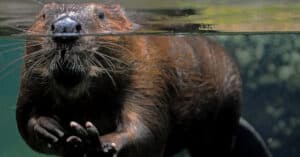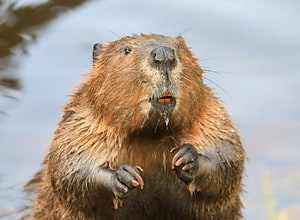With their innocent little faces and darling eyes full of wonder, baby beavers are some of the most delightful creatures around! These adorable little bundles of fur embody innocence and charm, with tiny bodies covered in luscious fur coats, boundless energy, and playful curiosity. Let’s take a closer look at some extremely adorable baby beaver pictures as we delve into a few incredible facts about these enchanting little animals!
#1 – Baby Beavers Are Called Kits
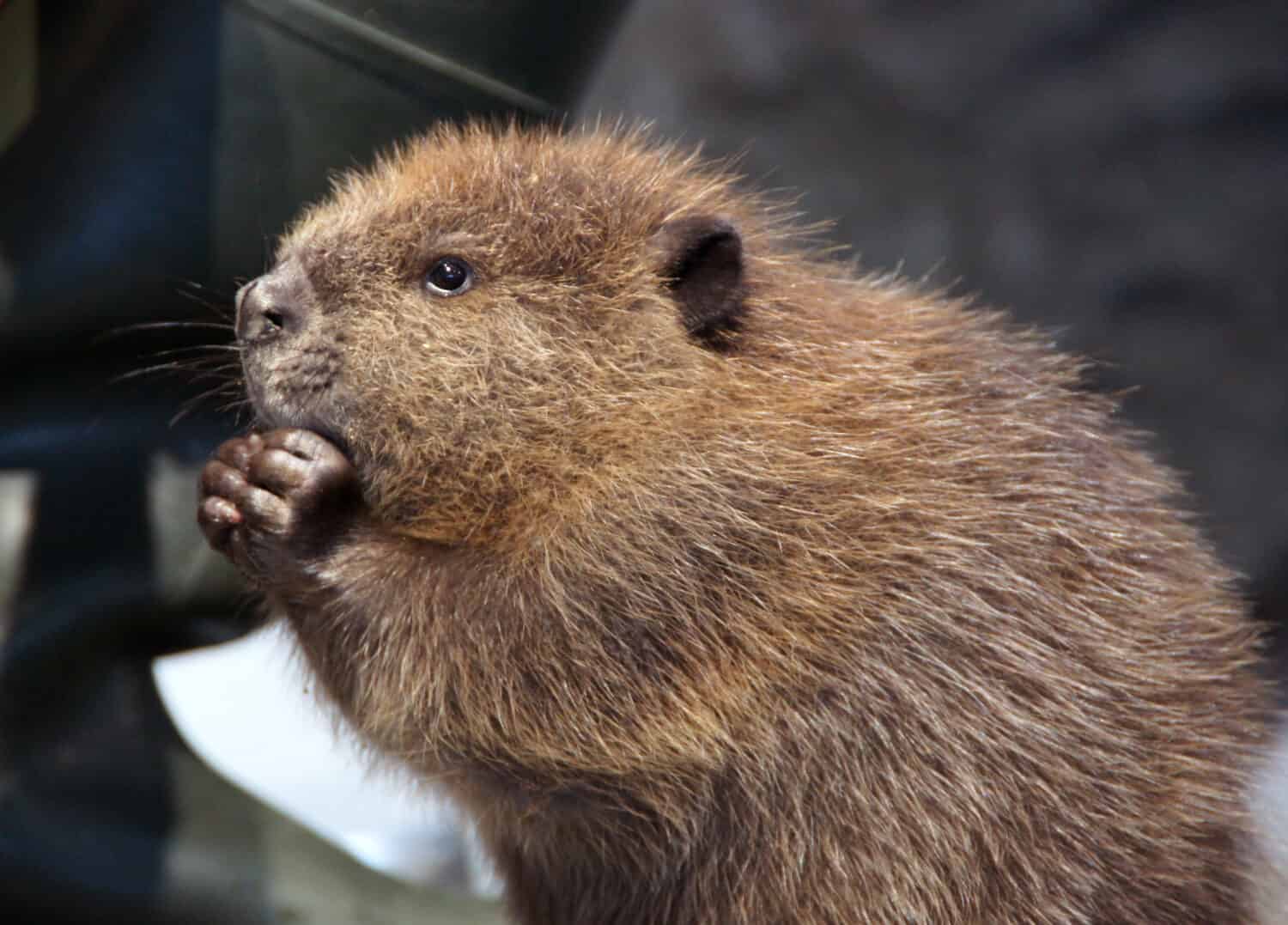
Baby beavers are well-developed, but they still rely completely on their parents for the first part of their lives.
©KamalaNPS/Shutterstock.com
Coming into the world in litters ranging from one to six, baby beavers are called kits. Although they eventually grow to be the second largest rodents in the world, these tiny creatures begin life weighing only about 1 pound (typically between 9 to 21 ounces). Despite their small size, however, baby beavers are born with remarkably well-developed bodies. They are already covered head to toe with a soft and luxurious fur coat, which provides both warmth and protection.
#2 – Baby Beavers Are Born with Teeth and Open Eyes

Baby beavers have a clear nictitating membrane they pull over their eyes to protect them underwater.
©Geoffrey Kuchera/Shutterstock.com
Unlike many other mammals, baby beavers’ eyes are wide open from the moment they’re born. In addition, these little cuties also come equipped with a full set of teeth. They have four sharp incisors, or front teeth, on both their top and bottom jaws. Beavers also have four molars, or back teeth that help them grind and chomp down on their food.
For the first week of life, baby beavers solely rely on milk from their mothers. By the second week, however, these determined little kits add solid food to their diet as well, thanks to their already erupted teeth. They continue to nurse for up to three months as they stay snuggly nestled inside the lodge, relying on their parents and older siblings to bring solid food back for them.
#3 – Baby Beavers Are Excellent Swimmers
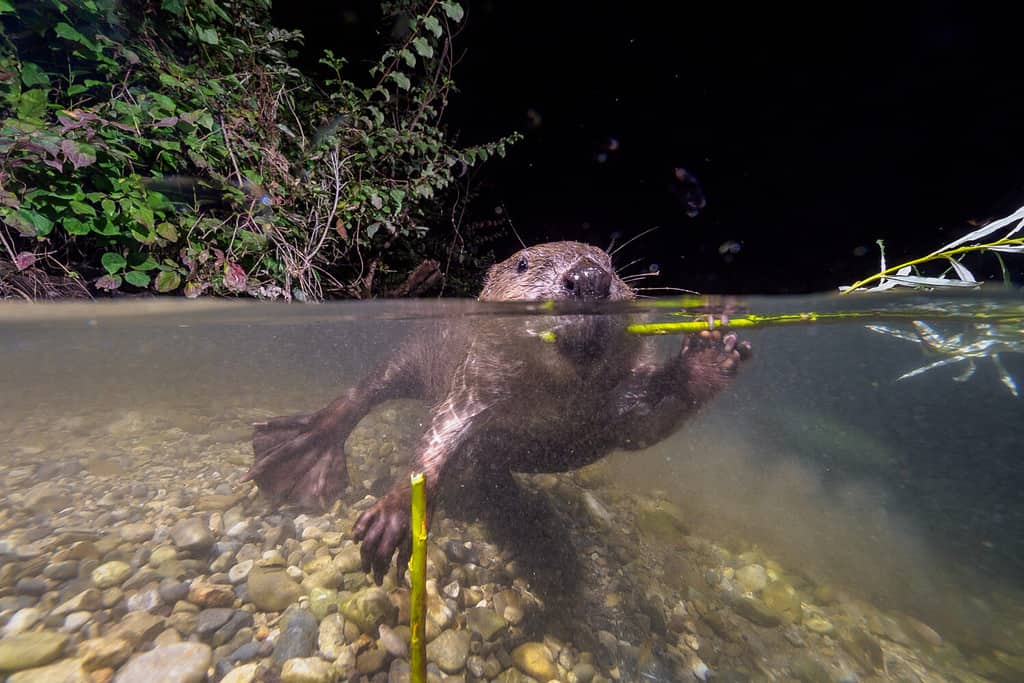
Baby beavers are born with webbing on their back feet, which helps them to swim at an early age.
©benny337/Shutterstock.com
Baby beavers are great swimmers and can take to the water within just a few hours after birth! They don’t venture outside of their cozy lodge for several weeks, but that doesn’t stop them from honing their swimming skills. Baby beavers begin their aquatic education by practicing within the calm waters of the lodge, like their own exclusive at-home swimming school. Their webbed back toes act as natural flippers, helping them navigate through the water with ease. And their tails act as built-in rudders to ensure smooth sailing. In addition, their luxurious fur coats and a layer of fat beneath the skin help to keep them warm in the water and add to their buoyancy.
#4 – Baby Beavers Live in Bonded Families

Beavers are very social animals and live together in tight-knit families.
©Oksana Golubeva/Shutterstock.com
The center of beaver society is built upon strong family units. Each family unit is made up of a loving and monogamous pair. Female beavers care for and nurture the kits, while male beavers work to protect their home and territory. Mother beavers frequently cradle their babies upon their broad tails or embrace them in their paws while in an upright posture. When the mother takes her babies in the water, they seek solace on her back.
Older siblings often stay an extra year and help to take care of new baby kits as well. Some beaver families can grow quite big and end up living in more than one lodge! Beavers reinforce their bonds through mutual grooming and playful wrestling, fostering a profound sense of closeness among family members. In fact, conflicts within beaver families are surprisingly rare.
#5 – There Are Two Different Species of Baby Beavers

Eurasian beavers were
reintroduced
into the wild after being nearly hunted to extinction.
©Wild Carpathians/Shutterstock.com
Today, there are two different beaver species: the North American beaver (Castor canadensis) and the Eurasian beaver (Castor fiber). Although the two look somewhat similar, they actually have some important differences. Eurasian beavers, for example, live in Asia and Europe, while North American beavers live in North America. In addition, Eurasian beavers are slightly bigger and have slimmer tails compared to their North American cousins. Eurasian beavers grow 31 to 39 inches long and weigh 24 to 66 pounds. North American beavers, on the other hand, grow 29 to 35 inches long and weigh 24 to 71 (although they are usually closer to 40 or 45 pounds).
#6 – Baby Beavers Are Very Vocal

Baby beavers have special oil glands that help to waterproof their fur.
©Holly Kuchera/Shutterstock.com
Depending on their age and what they want to say, baby beavers express themselves in many different ways. Newborn kits, for example, often let out tiny high-pitched squeals when they’re hungry or chilly. If they feel scared, they may also whine. In addition, baby beavers make adorable soft mews and chirps, which is likely their way of showing contentment.
As baby beavers grow older, they begin to chatter away to express excitement or when they’re feeling a bit on edge. Adult beavers also chatter, but it’s usually louder and may last a bit longer. Beavers can also grunt, whistle, or hiss. When they sense danger, beavers will slap the water’s surface with their large tails to alert the rest of their family.
#7 – Baby Beavers Can’t Burp — But They Can Pass Gas
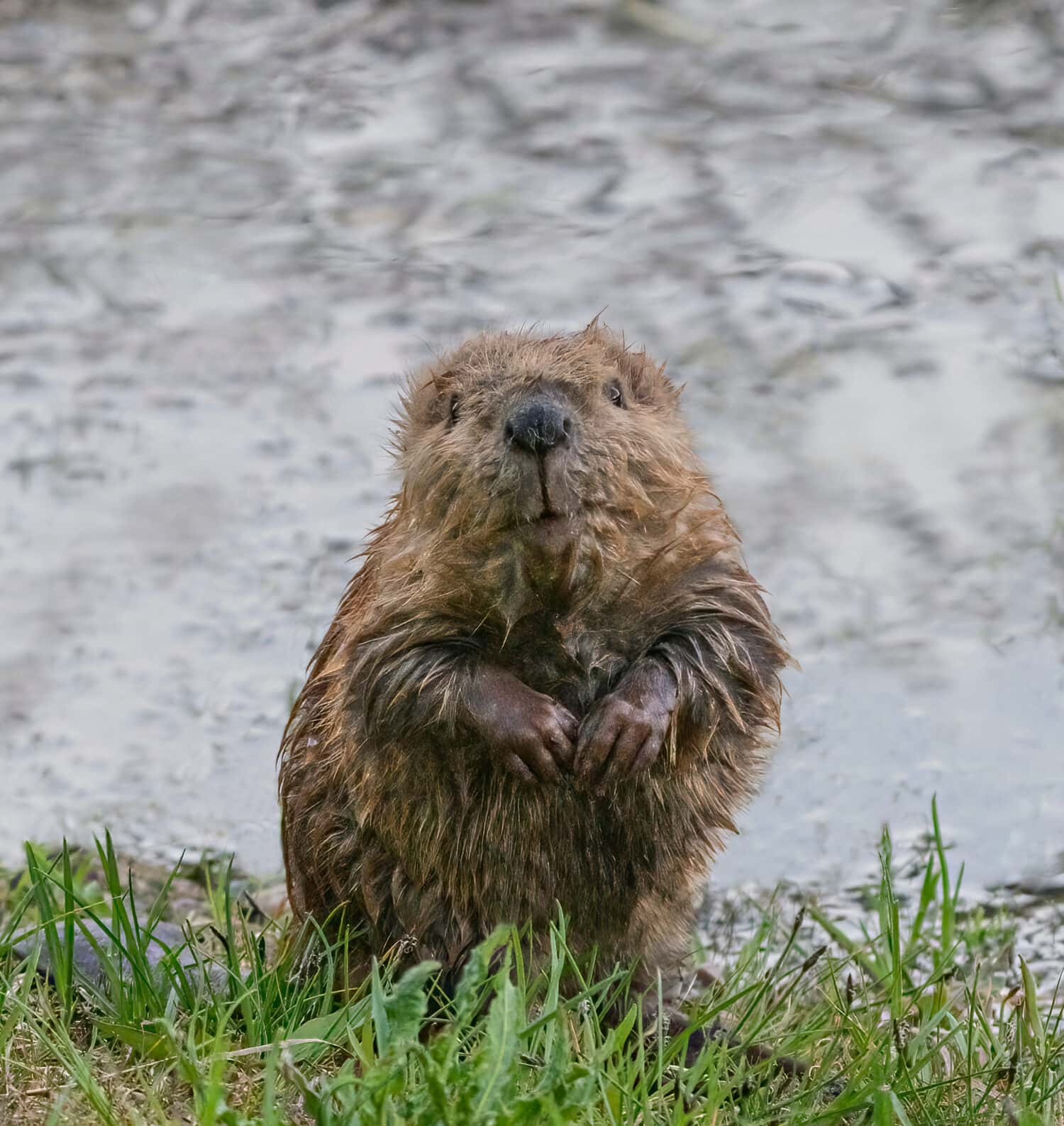
Baby beavers love to play with rocks, sticks, and other objects, as well as with their siblings.
©Richard Seeley/Shutterstock.com
Instead of a diaphragm, beavers have a powerful and muscular stomach that helps them digest tough plant material. In addition, they have a wealth of bacteria in their digestive system that breaks down the tough plant material they munch on. This specialized stomach also has an interesting side effect: it prevents beavers from burping. That’s right, baby beavers cannot burp!
However, like humans and other mammals, air still gets into their stomachs when beavers eat or drink. In addition, their unique digestion process produced a lot of gas as a byproduct. But if beavers can’t burp, where does all that air go?
Well, they may not burp, but beavers do have their own way of releasing gas. And how do beavers bid farewell to this gas? Well, it makes its grand exit through their rectum, allowing them to discreetly flatulate.
#8 – Baby Beavers Stay with Their Families for at Least Two Years
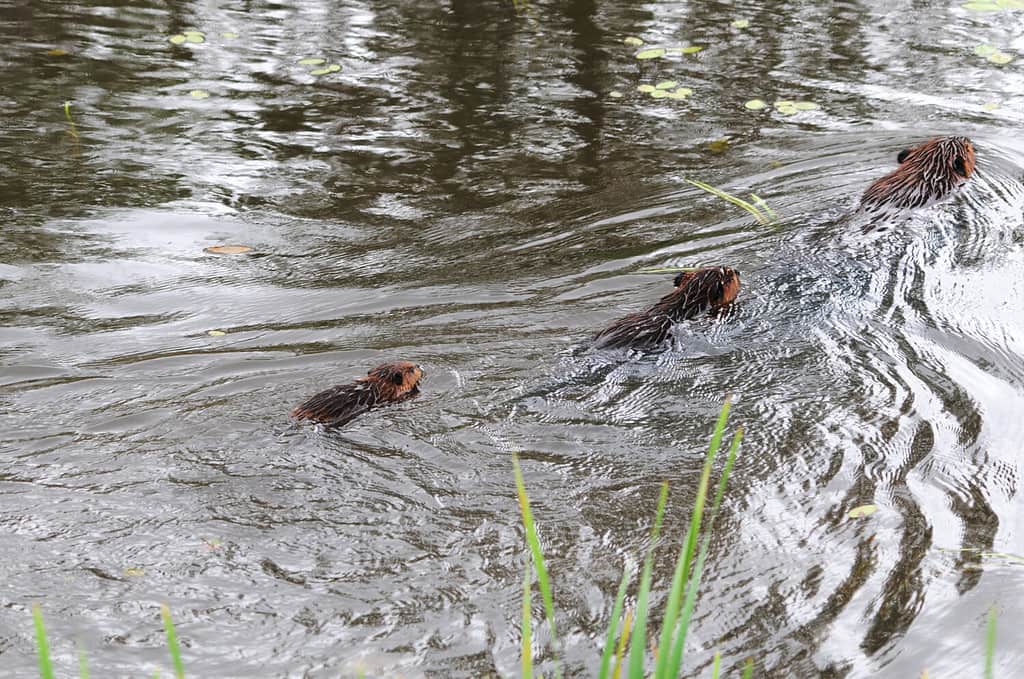
Baby beavers spend almost all of their time with their families.
©Rejean Aline Bedard/Shutterstock.com
Although baby beavers are born with well-developed bodies, open eyes, and erupted teeth, they are still extremely vulnerable. In fact, for the first several weeks, baby beavers stay within the safety of their lodge for several weeks where their mother nurtures and cares for them. As they get older, baby beavers begin to venture out and embark on their own adventures. These young explorers often choose to tag along with an older family member, clinging tightly to their backs as they navigate the outside world. In addition, baby beavers begin to lend a helping hand in construction endeavors, helping their families build and repair their homes.
Beavers become independent typically around the age of two. However, if there are bustling populations or during times of drought and scarcity, young beavers may choose to remain alongside their parents for an additional year or even longer.
FAQS (Frequently Asked Questions)

Baby beavers stick close to their mothers for safety and assurance.
©Jarmo Saarinen/Shutterstock.com
Baby beavers are called kits.
Baby beavers nurse on their mother’s milk for the first two to three months. In addition, beginning as early as the second week of life, baby beavers begin eating solid foods. As herbivores, baby beavers eat aquatic plants, bark, leaves, twigs, shrubs, grasses, and crops.
When baby beavers are born, they weigh between 9 and 21 ounces. By the time they are 14 weeks old, they typically weigh 8 to 9 pounds.
Baby beavers live inside their family’s lodge. They stay inside for several weeks but eventually begin to explore beyond the lodge with other family members. Baby beavers will remain with their families until they are about two years old. Beavers build lodges in marshes, rivers, ponds, lakes, and other wetland areas. North American beavers live in North America, while Eurasian beavers live in Europe and Asia.
Thank you for reading! Have some feedback for us? Contact the AZ Animals editorial team.





